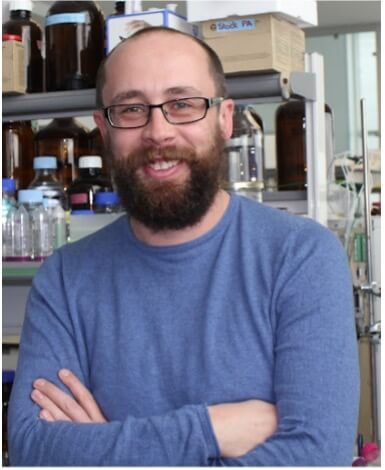<< Back to MOTIFvations Blog Home Page
Proteomics and Epigenetics – Two Worlds Collide to Describe Disease-Related Mechanisms

August 22, 2022
Table of Contents:
-
Introduction
-
Linking DNA Methylation and Phenotypes with Epigenome-wide Association Studies
-
When Epigenetics and Proteomics Collide
-
Linking Associations Between DNA Methylation and Blood Circulating Protein Levels to Disease Mechanisms
-
Conclusions and the Next Collisions Between Epigenetics and Proteomics
Introduction
Genome-wide association studies (GWAS) employing intermediate traits such as gene expression, proteomics, and metabolomics have helped to deepen our understanding of disease-associated mechanisms; however, epigenome-wide association studies (EWAS) linking epigenetic modifications to underlying disease-associated processes with the aid of the proteomic analysis of specific biomarkers have remained few and far between. In this article, we look at how researchers combine blood-based epigenetic and proteomic analysis to uncover the underlying disease-associated mechanisms.
Linking DNA Methylation and Phenotypes with Epigenome-wide Association Studies
In a previous collision between the worlds of epigenetics and proteomics, researchers headed by Karsten Suhre (Weill Cornell Medicine-Qatar, Doha, Qatar) demonstrated (with a limited set of CpG sites) that complex networks of associated multiomic traits that connect DNA methylation, gene expression, and protein/metabolite levels to disease endpoints emerge from EWAS. In theory, such networks can guide the development of personalized treatments for complex diseases by, for example, using DNA methylation levels as a biomarker for treatment responses or identifying drug targets that modify underlying dysregulated processes.
Taking additional inspiration from a previous EWAS with metabolomics, the Suhre team has again forced the worlds of epigenetics and proteomics to collide and now reports on their EWAS of the human blood plasma proteome with full replication with the hope of investigating the role of DNA methylation in disease. DNA methylation measured in blood cells can constitute a proxy for processes occurring predominantly in other body tissues when a physiological challenge affects the entire body and induces similar responses from all cells, while the application of blood circulating proteins as intermediate phenotypes can help to highlight underlying disease-associated mechanisms.
When Epigenetics and Proteomics Collide
In detail, Zaghlool and colleagues undertook a large EWAS of over 1,000 blood circulating proteins by exploiting the SOMAscan affinity proteomics platform and determining the DNA methylation level of nearly half a million CpG di-nucleotide sites using the Illumina Infinium 450K array. The proteomics technology employed by the authors took advantage of “slow off-rate modified aptamers” to measure circulating proteins in a highly reproducible manner from a single sample of plasma, serum, or urine. Notably, this strategy functions well when compared to antibody and mass- spectrometry-based proteomic approaches. Their initial steps employed samples from participants of the population-based KORA (Cooperative Health Research in the Region of Augsburg) collaborative genetic epidemiological study, while the replication study employed samples from a multi-ethnic cohort of participants from the multi-ethnic Qatar metabolomics study on diabetes (QMDiab).
Importantly, age, sex, lifestyle, disease, environmental factors, cell-type composition, and genetic variations can all significantly influence DNA methylation levels; therefore, conclusions from EWAS must first consider driving and potentially confounding factors. Initial analyses identified around 38,000 associations between DNA methylation and blood circulating protein levels (so-called “pQTMs”) in the KORA samples; however, an iterative regression approach removed general association-driving factors by identifying associations between CpGs and proteins driven by the above-noted factors (and more) to leave 318 pQTMs. Subsequent replication of pQTMs in the QMDiab study applied an identical regression approach and identified 98 pQTMs shared between these two studies.
Linking Associations Between DNA Methylation and Blood Circulating Protein Levels to Disease Mechanisms
These 98 pQTMs comprised 89 unique CpGs and 15 unique proteins, which the authors grouped into nine independent association signals labeled PAPPA, NLRC5, CLEC11A, ICAM5, C4, SIGLEC5, PRTN3, AHRR, and GP1BA, in reference to a characterizing CpG gene locus or associated protein. THE PAPPA group (Pappalysin-1, or pregnancy-associated plasma protein-A - a metalloproteinase) comprised 72 pQTMs (all CpGs) with DNA methylation negatively correlated with gene expression in general; however, the team discovered that 70 of the 72 became insignificant when regressing out any association with eosinophil count, a blood cell type often elevated after allergic reactions.
The NLRC5 group (NOD-like receptor family CARD domain containing 5 - a regulator of the inflammasome) comprised 14 pQTMs at three genetic loci (NLRC5, PSMB8, and HCP) with five associated CpGs, which in turn associated with one or more immune system proteins (CD48, CD163, CXCL10, CXCL11, LAG3, FCGR3B, and B2M). With the help of Ingenuity Pathway Analysis (IPA, Qiagen Inc.), the team constructed a network connecting genes regulated by associated CpGs with the immune system proteins and, when combined with findings from the literature, suggested an association between NLRC5 methylation and chronic low-grade inflammation-related diseases such as cancer, cardiovascular disease, lupus, and rheumatoid arthritis. The remaining groups comprised a single CpG locus (AHRR, GP1BA, ICAM5, CLEC11A, PRTN3, C4, and SIGLEC5), with two cases involving multiple correlated CpGs.
Additional characterization of the implicated CpGs and proteins to identify the biological processes related to these 98 pQTMs employed results from the BIOS study (18 expression QTMs [eQTMs] overlapped with the 89 CpGs) and the EWAS Atlas (215 previously reported disease associations). Furthermore, the authors evaluated the 98 pQTMs for association with the wide range of clinical phenotypes available in the KORA study, identifying associations for 14 proteins and 8 CpGs. Finally, the team uncovered associations with 20 of the 89 CpGs with 2,251 previously reported urinary, salivary, and blood metabolites. Overall, 13 metabolic associations occurred with the AHRR smoking locus, while the strongest metabolic association for all five CpGs of the NLRC5 locus occurred for a metabolite (urinary 1,3,7-trimethylurate) known to negatively regulate inflammasomal genes, such as NLRC4.
Conclusions and the Next Collisions Between Epigenetics and Proteomics
Overall, the team hoped that their large-scale analysis linking DNA methylation to disease endpoints via intermediate proteomic phenotypes in multi-ethnic individuals would provide correlative evidence for interactions between the involved genes, proteins, and metabolites and hence contribute to a better understanding of the regulatory processes associated with chronic low-grade inflammation and support the creation of novel, personalized treatment approaches for a range of diseases. The authors note several ways to further improve their findings in the future, including implementing additional verification steps to confirm findings from the aptamer-based proteomics array-based methylation assays, undertaking EWAS in cell/tissue samples other than blood, and continuing to improve the regression of confounding factors.
For more on how the collision of the epigenetic and proteomic worlds can reveal information that may improve our understanding of disease mechanisms and prompt the development of novel therapies, see Nature Communications, January 2020.
About the author

Stuart P. Atkinson, Ph.D.
Stuart was born and grew up in the idyllic town of Lanark (Scotland). He later studied biochemistry at the University of Strathclyde in Glasgow (Scotland) before gaining his Ph.D. in medical oncology; his thesis described the epigenetic regulation of the telomerase gene promoters in cancer cells. Following Post-doctoral stays in Newcastle (England) and Valencia (Spain) where his varied research aims included the exploration of epigenetics in embryonic and induced pluripotent stem cells, Stuart moved into project management and scientific writing/editing where his current interests include polymer chemistry, cancer research, regenerative medicine, and epigenetics. While not glued to his laptop, Stuart enjoys exploring the Spanish mountains and coastlines (and everywhere in between) and the food and drink that it provides!
Contact Stuart on Twitter with any questions
Related Articles
Epigenetics of Liquid Biopsies, Histone Ubiquitination, and piRNAs & SUMO
January 22, 2020
This latest epigenetics news summary covers approaches to investigate epigenetics and proteomics of liquid biopsies, a new role for histone ubiquitination in regulation of gene expression, and new insights into piRNA-mediated transcriptional silencing.
Read More
Stem Cell Exhaustion: How Metabolism and Epigenetics Impact Stem Cell Aging
October 1, 2021
Stem Cell Exhaustion: alterations to key metabolites during aging impacts epigenetic profiles and induces mesenchymal stem cell exhaustion and a reduction in bone-forming potential. Is there a rejuvenation strategy to be found?
Read More
<< Back to MOTIFvations Blog Home Page








